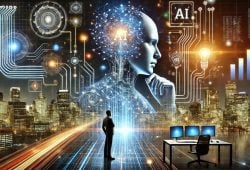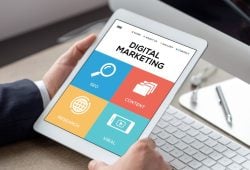
The customer experience (CX) will be a key pillar in the strategies and marketing trends for 2025. With technological advancements such as predictive artificial intelligence (AI) and a renewed focus on human empathy, companies are striving to bridge the gap between consumer expectations and the current service reality.
According to a PwC report, while 73% of consumers consider customer experience crucial in their purchasing decisions, only 49% believe companies meet their expectations.
Based on the report “2025 CX Trends: AI and Human Empathy in the Hybrid Era,” published by Glance CX, these are the marketing trends for 2025 related to customer experience.
What is predictive artificial intelligence in CX?
Predictive artificial intelligence is positioned as the driving force behind change in the customer experience. This approach uses advanced data analytics, machine learning, and real-time processing to anticipate customer needs before they arise.
According to the report, these are some benefits of predictive AI in 2025:
- Proactive engagement: Companies can transform reactive interactions into proactive ones.
- Advanced personalization: Customers receive recommendations and offers based on their preferences and historical behavior.
- Improvements in loyalty: According to Gartner, companies implementing predictive AI achieve long-term customer loyalty.
READ ALSO: What is the future of email marketing? The trends we can expect in 2025
How to build trust and transparency with customers?
Trust is an essential pillar in customer experience. In 2025, companies must prioritize transparency and empathy to meet the growing demands of consumers. According to Zendesk, 63% of customers are concerned about potential biases in AI tools.
Key strategies to gain customer trust
- Clear communication: Provide detailed explanations about products and services.
- Empathetic problem resolution: Acknowledge mistakes and take actions to resolve them.
- Ethical use of AI: Implement mechanisms to avoid discrimination and bias.
What are hybrid models in CX?
Hybrid models, combining digital efficiency with human connection, are the new standard for 2025. Consumers demand integrated experiences that blend digital tools with personalized assistance.
Success stories in hybrid models
- Financial services: Banking institutions like U.S. Bank offer live video sessions and co-navigation, achieving higher satisfaction rates.
- Retail: According to Gartner, retailers offering unified commerce experiences will increase their revenue by 20% by 2025.
ALSO READ. Digital marketing trends that will dominate in 2025 according to Google
What are the essential metrics for CX in 2025?
Customized metrics are fundamental to measuring CX effectiveness. Leading companies are adapting their key performance indicators (KPIs) to reflect their customers’ unique expectations.
According to the Glance report, these are the main CX metrics:
- Net Promoter Score (NPS): Measures customers’ willingness to recommend a brand.
- Customer Effort Score (CES): Evaluates the effort required by customers to solve issues.
- Customer Lifetime Value (CLV): Calculates projected revenue generated by a customer throughout their relationship with the company.
READ ALSO. What will be the marketing trends for 2025 in retail?
The collaboration between AI and human agents is redefining customer experience in 2025. Far from replacing humans, AI enhances their capabilities, enabling more personalized and effective interactions.
Some practical applications include:
- Predictive assistance: AI identifies patterns and suggests proactive solutions.
- Real-time data access: Agents receive key information to make informed decisions.
Marketing trends 2025: The future of CX in 2025
Customer experience in 2025 will be defined by a balance between advanced technology and human empathy. Companies integrating predictive AI, hybrid models, and customized metrics will be better positioned to meet customer expectations, building lasting relationships and securing their competitive advantage.
The challenge is not just to adopt innovative technologies but also to ensure they strengthen trust and emotional connection with consumers.










